Alexander Menshikov. The triumphant at Perevolochnaya and the illustrious thief
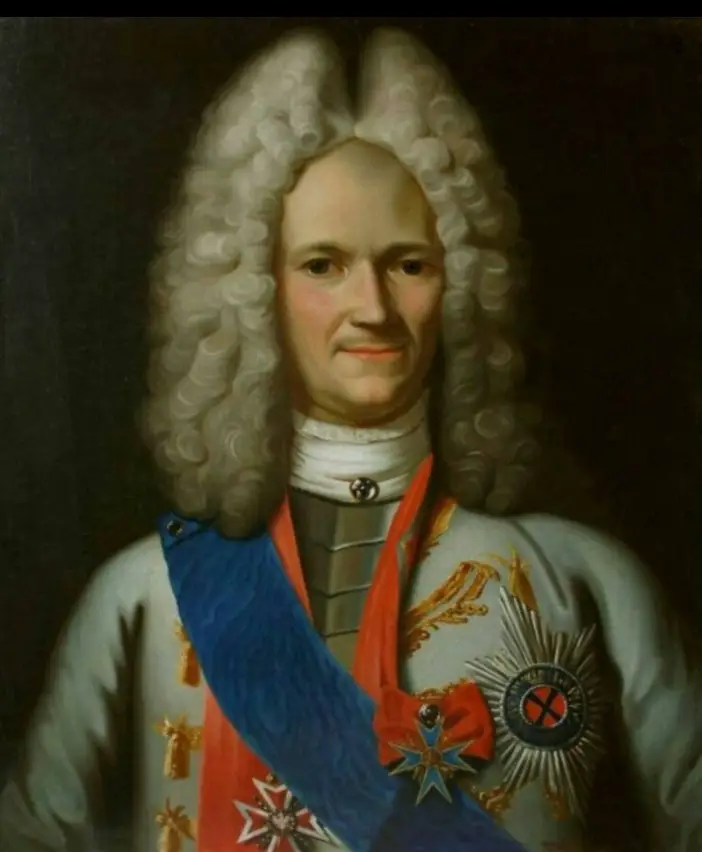
A. Menshikov in a portrait by an unknown artist. Beginning of the 18th century
As we remember from previous article, after Poltava, Peter I, accepting the swords of captured Swedish generals, and then feasting with them, forgot to give the order to pursue the army of Charles XII. Only late in the evening did he remember about the retreating Swedes, and the dragoons of R. Bour and M. Golitsyn were sent in pursuit of them.
The next day, they were joined by Alexander Menshikov, who was entrusted with the overall leadership of the operation. Anyone who captured Karl was promised the rank of general and 100 thousand rubles. Peter himself followed the Swedes on June 30 - at the head of the Ingria and Astrakhan regiments.
The unprecedented surrender of the Swedes at Perevolochnaya
The Swedes, pursued by Menshikov's dragoons, approached the Dnieper.
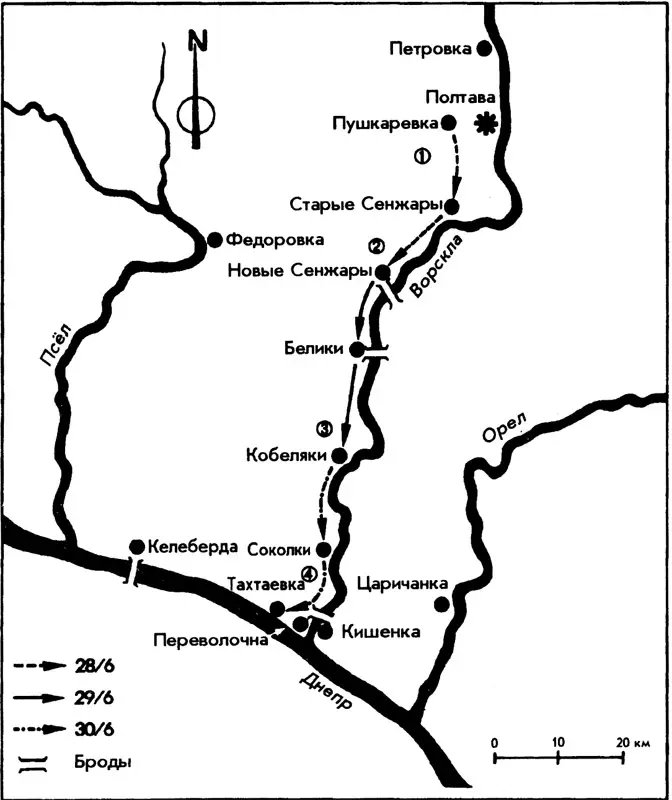
The path of the Swedish army from Poltava to Perevolochnaya
Charles XII was inclined to give another battle, but the generals who were with him persuaded him to abandon this idea and cross to the other side.
General Kreutz stated that if the Russians approached with one cavalry, they would fight back without Karl. And if the entire Russian army approaches, the presence of the king will not help. It was assumed that Karl would wait for the army in Ochakov, after which he would lead it to Poland - to join the corps of General Krassau and the Polish troops of Stanislav Leszczynski.
An order was sent to Stockholm to urgently recruit new recruits. On June 30, 1709, 1 Cossacks and 500 Swedes crossed with the king, among whom were generals Sparre, Lagerkron, Meyerfeld, Gillenkrok, the commander of the drabants Hord, and the secretary of the royal chancellery Joachim Duben.
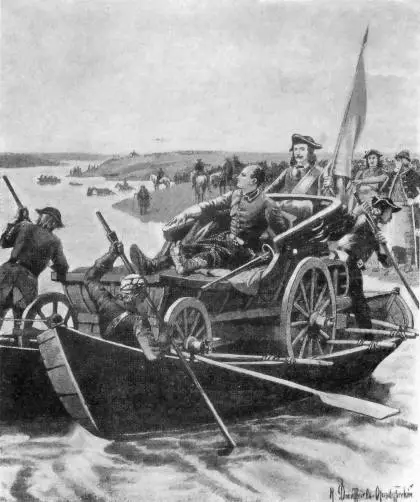
Crossing of Charles XII across the Dnieper
Mazepa and his young wife also moved to the other side. Part of the hetman's property drowned, which gave rise to rumors about Mazepa's treasure.
The command of the remaining troops was entrusted to General Levengaupt, who was morally broken by two defeats in a row - at Lesnaya and at Poltava. His mood completely dropped when he caught an ermine that had climbed into his hat: he considered this animal a symbol of the Swedish army, which also “lured itself into a trap.”
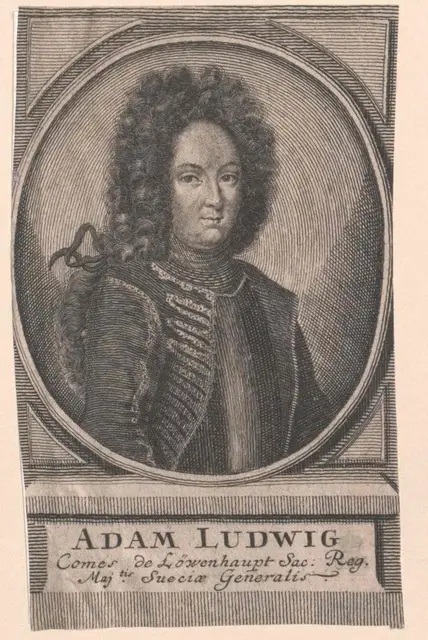
Adam Ludwig Lewenhaupt
Already three hours after the crossing of Charles XII, Menshikov’s units approached Perevolochnaya - dragoons and soldiers of the Semenovsky regiment mounted on horses. There were only about 9 thousand of them - against 18 Swedes. The Semyonovites, lined up in a square, took positions in the center, the dragoons were located on the flanks.
The Russian soldiers were extremely tired; the Swedish General Kreutz, who went out on reconnaissance, claimed that both horses and people could barely stand on their feet. A less decisive person would probably have limited himself to an attempt to blockade the enemy camp, but Menshikov demanded immediate surrender from the Swedes.
Part of the Swedish army was seized by panic, some soldiers threw themselves into the water, others in small groups went to surrender. Most of the army, as Levengaupt put it, “was in a state of stupor” and “no more than half of the lower ranks and officers remained at their banners.”
However, there were units ready to join the battle: Ramswerd's Noble Regiment lined up, and Wennerstedt's regiment, the dragoons of Albedil's regiment declared that they would “do everything humanly possible”; while waiting for the order, they read prayer books, lying near the saddled horses.
Levengaupt had the opportunity to gather forces equal to 6–7 regiments and drive away Menshikov’s detachment. But he hesitated, infecting other commanders with his uncertainty. He even turned to officers and soldiers with an offer to express their opinion on surrender.
It must be said that the combat regulations of the Swedish army categorically forbade surrendering, and therefore many came to the conclusion that the situation was hopeless.
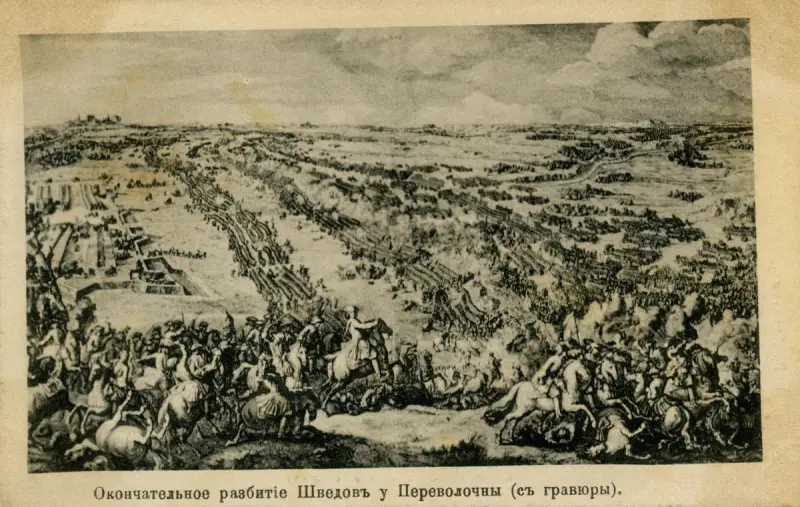
"The final defeat of the Swedes at Perevolochny." Engraving Larmessen from a picture of Martin Jr.
According to the drafted surrender agreement, the Swedes handed over to the Russians weapon, horses and convoys: the trophies were 21 guns, 2 howitzers, 8 mortars, 142 banners and 700 thousand thalers (part of this money belonged to Mazepa).
Thus, the total amount of “prize money” after Poltava and Perevalochnaya amounted to 2 million 700 thousand thalers. Let us note that at the conclusion of the Nystadt Peace Treaty, Russia undertook to pay Sweden 2 million efimki as compensation for the acquired territories.
The privates of the Swedish army were left with personal property; the officers, in addition, were promised maintenance at the expense of the royal treasury, but they were obliged to hand over jewelry, gold and silver dishes, expensive fabrics, sable fur coats and skins.
Swedish infantrymen, saluting with muskets, laid down their weapons in front of the Semenovsky regiment. The cavalrymen passed in front of the formation of Bour's dragoons, throwing kettledrums, standards, swords and carbines on the ground in front of them. Eyewitnesses recalled that some Swedes surrendered with a feeling of obvious relief, others cried.
Their generals and senior officers were at this time having lunch with Menshikov, who in this case clearly imitated the behavior of Peter I after Poltava.
Swedish historian Peter Englund gives the following figures about the surrendered Swedes:
Three generals - Levenhaupt, Kruse and Kreutz.
Officers - 983.
Non-commissioned officers and soldiers - 12 (including 575 cavalrymen).
Non-combatants - 4 people, including 809 pastors, 40 musicians, 231 craftsmen of various specialties, 945 courtiers of Charles XII and 34 royal footmen, as well as grooms, farriers, clerks, furriers and others.
Women (wives of soldiers and officers) and children - 1.
Thus, the number of prisoners reaches 20 thousand people. Later, Quartermaster General Axel Gyllenkrok was captured in Chernivtsi.
The Cossacks were recognized as traitors, and the treaty did not apply to them.
Menshikov became field marshal general - the second in the Russian army after B.P. Sheremetev.
The news of the Poltava defeat of the seemingly invincible Swedish army shocked Europe. But even more surprising was the extremely shameful capitulation at Perevalochnaya. Everyone understood that not a single army and not a single commander was immune from failure. But the weak-willed surrender of almost 20 thousand fully combat-ready soldiers to an enemy twice as inferior was already too much.
Here, for example, is what the English ambassador Charles Whitworth wrote about the surrender of the Swedes:
But with what contempt the Danish envoy Georg Grund reports about the events at Perevolochnaya:
A truly terrible blow was dealt to Sweden's military and political prestige.
The news of the capitulation also struck Charles XII, who wrote to his sister:
Levenhaupt argued that he feared more than the king’s anger “the omniscient Lord, who sternly asks for deliberate murder.”
Unfortunately, the impression of the victories at Poltava and Perevolochnaya faded in 1711 after the unsuccessful Prut campaign of Peter I, in which the Russian Tsar repeated all the mistakes of the Russian campaign of Charles XII. Alexander Menshikov did not take part in this campaign of Peter.
New achievements of Menshikov in the Northern War
In 1710, with the participation of Menshikov, Riga was taken, for which the Danes awarded him the Order of the Elephant.
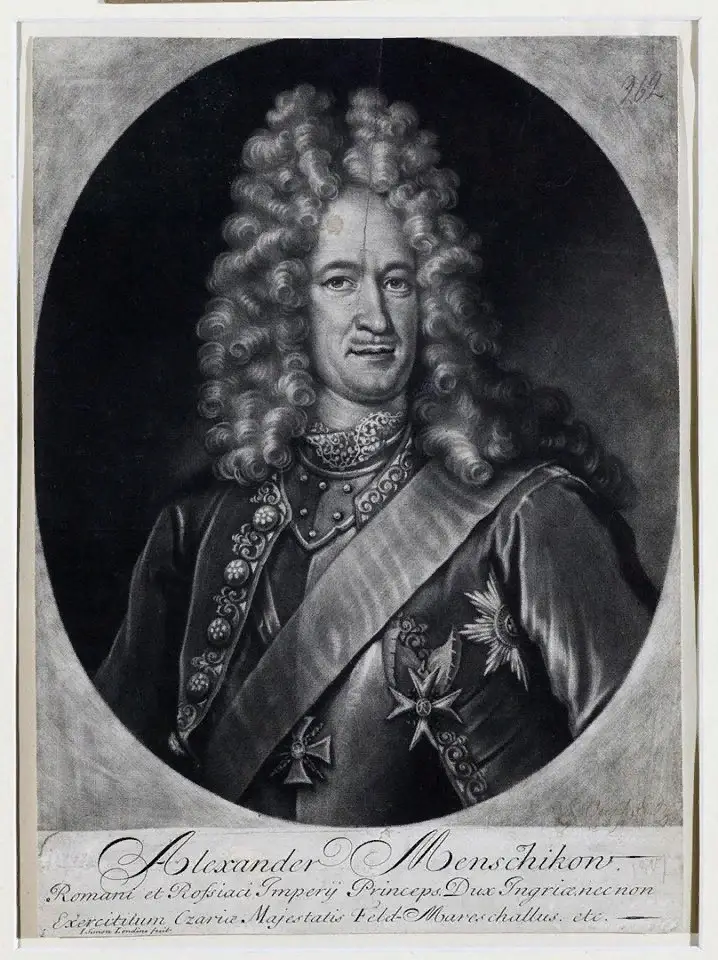
Jean Simon Londini. Portrait of Prince A. D. Menshikov, after 1709
In 1711, Menshikov besieged Stettin, but was forced to withdraw because the Danish allies did not bring up siege artillery. He nevertheless captured this city in 1712. It was transferred to Prussia in exchange for that country joining the Northern Alliance. At the same time, Menshikov took a bribe of 5 thousand gold ducats from the Prussians, which aroused the anger of Peter I.
In 1713, the hero of the article fought in Poland, Courland and Pomerania, and received the Prussian Order of the Black Eagle. In 1714, he returned to St. Petersburg, where on October 25 he received a letter from Newton electing him as a member of the Royal Society of London for the Advancement of Knowledge of Nature.
By the way, historians are sure that Menshikov was illiterate, and the only thing he learned was to put his signature, and even then it was very illegible. At the same time, he collected a large library (perhaps it was simply fashionable among the nobles close to Peter) and was the curator of the St. Petersburg printing house.
Menshikov's career as an active military leader after returning to St. Petersburg was completed, but in 1717 he became president of the Military Collegium.
“Loyal but thieving hand” of Peter I
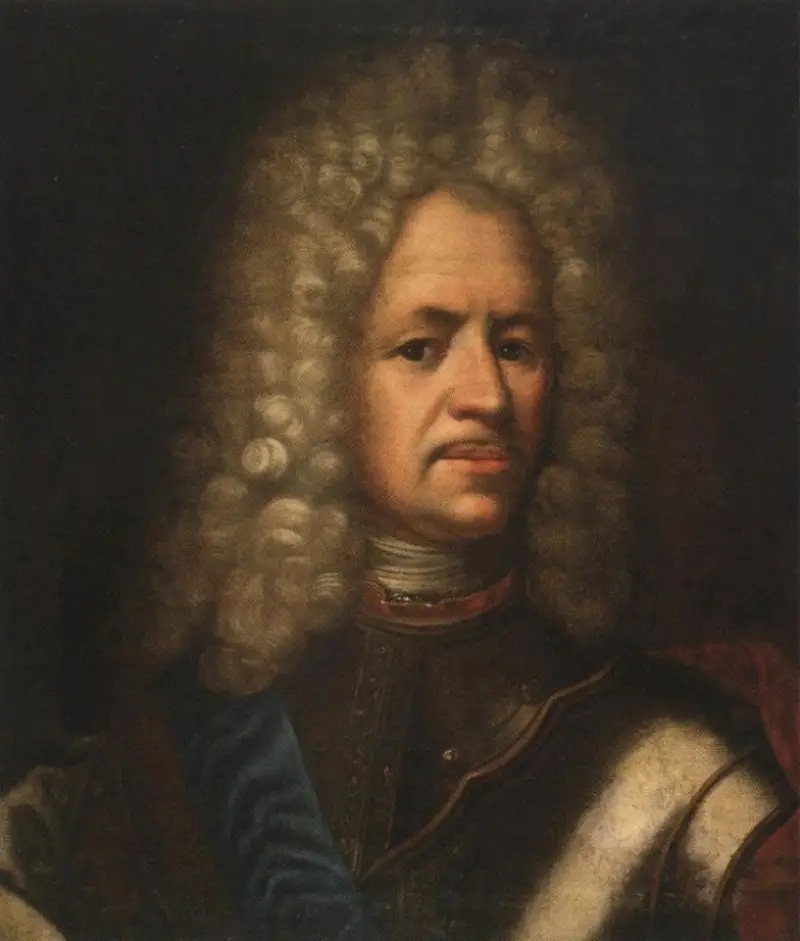
A. D. Menshikov in the 1720s, portrait by an unknown artist
It must be said that Alexander Menshikov also became famous for his incorrigible theft. It seems that for him stealing from the treasury and taking bribes was as natural as for a magpie dragging shiny objects into its nest. He was constantly under investigation, sometimes Peter himself beat him with his famous baton.
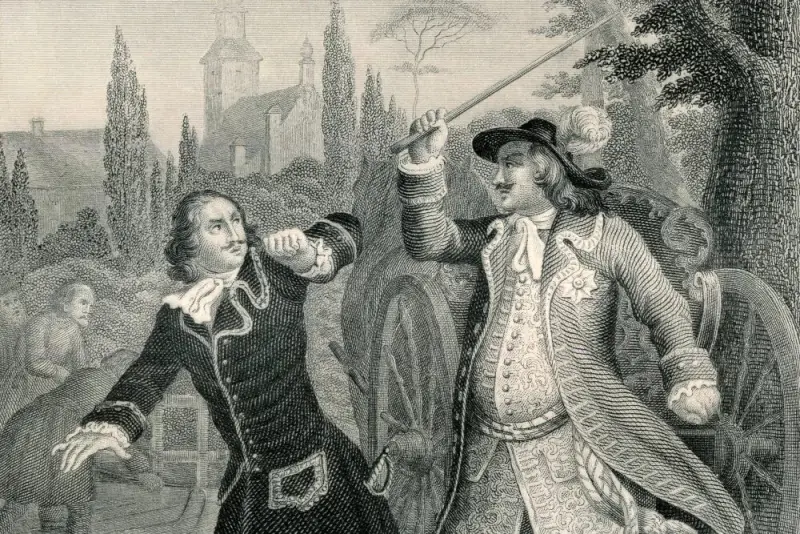
But Menshikov invariably came out unscathed. In addition, he was always covered by his former mistress, Marta Skavronskaya, who became the wife of Peter I. However, in 1724, the emperor nevertheless removed Menshikov from the posts of governor of St. Petersburg and president of the Military Collegium.
At the peak of his power, Menshikov was the largest landowner of the Russian Empire, the number of his serfs reached 99 thousand revision souls. Many explain the reason for Peter’s leniency by the fact that the tsar and his favorite had “common pockets,” and Menshikov’s palaces were used to receive ambassadors and hold assemblies.
The Danish envoy Just Yul in his notes claims that a significant part of Menshikov’s property and money actually belonged to the tsar and was “in trust” for the favorite. Already in April 1709, the English ambassador Whitworth reported to London about Menshikov’s request to apply for a passport for his relative, Vasily Aksenov, and about his intention to first make sure how much the prince “will express his readiness to use his influence” in lobbying British interests.
Menshikov was also interested in assistance in transferring accumulated funds abroad, but, ultimately, he withdrew his capital to banks in Venice and Amsterdam. It is quite possible that he acted on the instructions of Peter I, who perfectly understood how unpopular he was among his subjects. The tsar could not count on the support of the boyars, whom he forced to study, serve, smoke tobacco and wear foreign clothes.
The clergy condemned him for blasphemy and obscene fun at the “All-joking, all-drunken and most extravagant cathedral” and were indignant at the confiscation of the bells. The common people were reduced to poverty, because, according to Klyuchevsky, “in order to protect the fatherland from the enemy, Peter I devastated it more than any enemy.”
There were rumors that abroad “the Germans replaced the Tsar”; in anonymous letters Peter was called the Antichrist and the Angel of Satan. On the side of Peter I there was only the thinnest layer of “new people” led by the same Menshikov and serving foreigners who understood that in the event of the fall of this tsar, they would be the first to “fall under the distribution.”
In addition, Peter could not forget the Streletsky riot of 1682, when Mikhail Dolgorukov and Artamon Matveev were killed before his eyes. It is believed that it was after those events that 10-year-old Peter developed a nervous tic and seizures of epilepsy, which bothered him throughout his life. 7 years later, at the first and unconfirmed news of the danger of a new rebellion in favor of sister Sophia, he, abandoning everything, fled from Preobrazhensky to the Trinity-Sergius Lavra.
In 1698, having learned on the way to Venice about the suppression of a new Streltsy rebellion, Peter urgently returned to Russia. This revolt had long been suppressed by Alexei Shein and Fyodor Romodanovsky, the perpetrators were severely punished - no one could blame these people for Christian mercy. The same Romodanovsky then personally beheaded four rebels. However, the tsar unleashed new large-scale repressions, ordering the execution of more than a thousand people, five of whom were beheaded by Tsar Peter himself.
Fear of a possible conspiracy also explains the cruelty towards his son Alexei, to investigate whose case the famous “Secret Chancellery” was created on March 20, 1718. From June 19 until his death on the 26th of this month, the prince, solemnly “forgiven” by his father, was brutally tortured, forced to name more and more names of his “accomplices.”
In general, Peter I could indeed have insured himself in case of a possible flight from the country by transferring part of the funds to foreign banks with the help of Menshikov.
It is curious that members of the Supreme Council were well aware of the “high” financial relations between Peter I and Menshikov. François Guillaume Villebois reports:
With great difficulty, these funds were returned to Russia during the reign of Anna Ioannovna.
Love triangle
During the years of the Northern War, approximately 250 thousand people of various nationalities were captured in Russian captivity. These were both military personnel and “non-combatants” - blacksmiths, carpenters, farriers, laundresses and others. One of the most valuable (from the point of view of Peter I) “trophies” was the portomoy Marta Skavronskaya. At first she “pleased the soldiers under the cart,” but then in Marienburg Count B. Sheremetev (according to other sources, General R. Bour) drew attention to her. Then Alexander Menshikov took her to him.
Franz Villeboa, in his book “Stories about the Russian Court,” reports that the tsar met 19-year-old Martha in the fall of 1703, and the tsar honestly paid 10 francs (half a louis d’or) for the “night of love.” Vilboa's information deserves attention, since he was married to the eldest daughter of Pastor Gluck, in whose family the future empress was raised. And he was the best man at the wedding of Peter and Catherine.
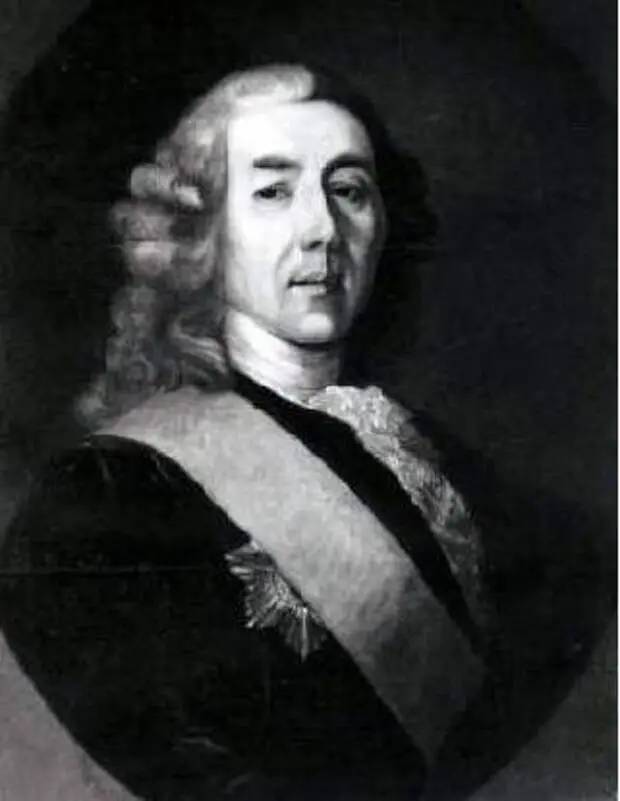
Francois Guillemot de Villebois in a portrait by an unknown artist. In Russia they called him Nikita Petrovich
After this, Martha remained in the service of Menshikov for another two years, but Peter also visited her periodically. And therefore it is unknown from whom exactly she gave birth in 1704 and 1705 to two boys - Peter and Paul, who died in infancy.
But in 1705, Peter I still decided to take her home, settling her in the estate of his sister Natalya (in the village of Preobrazhenskoye). In 1707 or 1708 she was converted to Orthodoxy, and the royal son Alexei became her godfather, from whom she received her patronymic. And from 1709, Catherine was almost constantly with Peter.
The fact is that only she knew how to relieve and alleviate some attacks, during which Peter rolled on the floor, screamed from a headache and sometimes lost his sight. Catherine laid his head on her lap and stroked his hair. When the king calmed down, she sat motionless for 2–3 hours. Sometimes these seizures could be prevented: noticing the convulsive twitching of the corners of Peter’s mouth, the courtiers called Catherine, who talked to him and stroked his head.
In 1711, the secret wedding of Peter and Catherine took place, and in 1712 they were officially married. In December 1721, Catherine was proclaimed empress, and in May 1724 she was crowned. During the coronation ceremony, Menshikov stood at the right hand of Peter.
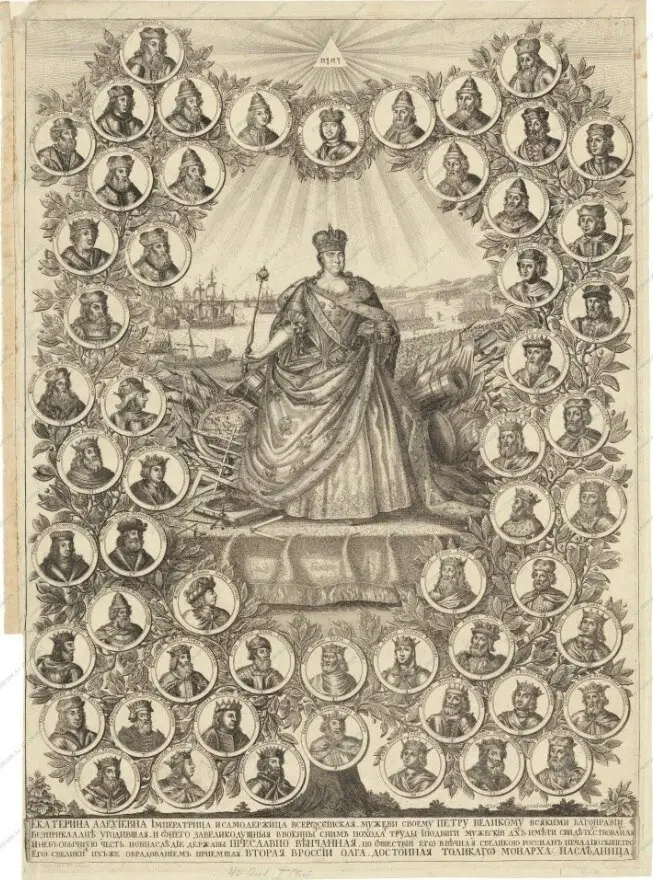
A. Zubov. Empress Catherine I surrounded by medallions with portraits of Russian tsars, 1725
But Catherine took a lover, who was not just anyone, but Willem (Wilhelm) Mons, the former adjutant of the Tsar and the brother of the famous favorite of Peter I. Anna Mons was the Tsar’s mistress for more than 10 years, the news of her relationship with the Saxon envoy Koenigsek brought Peter Infuriated, the favorite was placed under house arrest for 2 years, she was forbidden even to go to church.
When the Prussian ambassador Georg-John von Keyserling turned to Peter I for permission to marry Anna, the Russian monarch and the faithful Menshikov simply pushed him down the stairs, which caused a diplomatic scandal.
And now Peter was “cuckold” by Anna’s brother. Willem Mons was executed, his severed head, placed in a vessel of alcohol, was placed in Catherine's bedroom. This is not a joke: at the end of the 18th century, this head (as well as the head of Peter I’s mistress Maria Hamilton) was discovered by Ekaterina Dashkova, who was in charge of the Academy of Sciences.
Catherine II, who apparently was very pleased with the fact that her husband was Peter the Third and not the First, ordered these heads to be buried in the basement.
As for Peter I and Catherine, the emperor then lost interest in his wife; they reconciled only shortly before the emperor’s death.
The next article will tell you how Peter I’s wife Catherine was elevated to the Russian throne, the peak of Alexander Menshikov’s career, the fall of this temporary worker, as well as the fate of some of the descendants of this extraordinary man.
Information